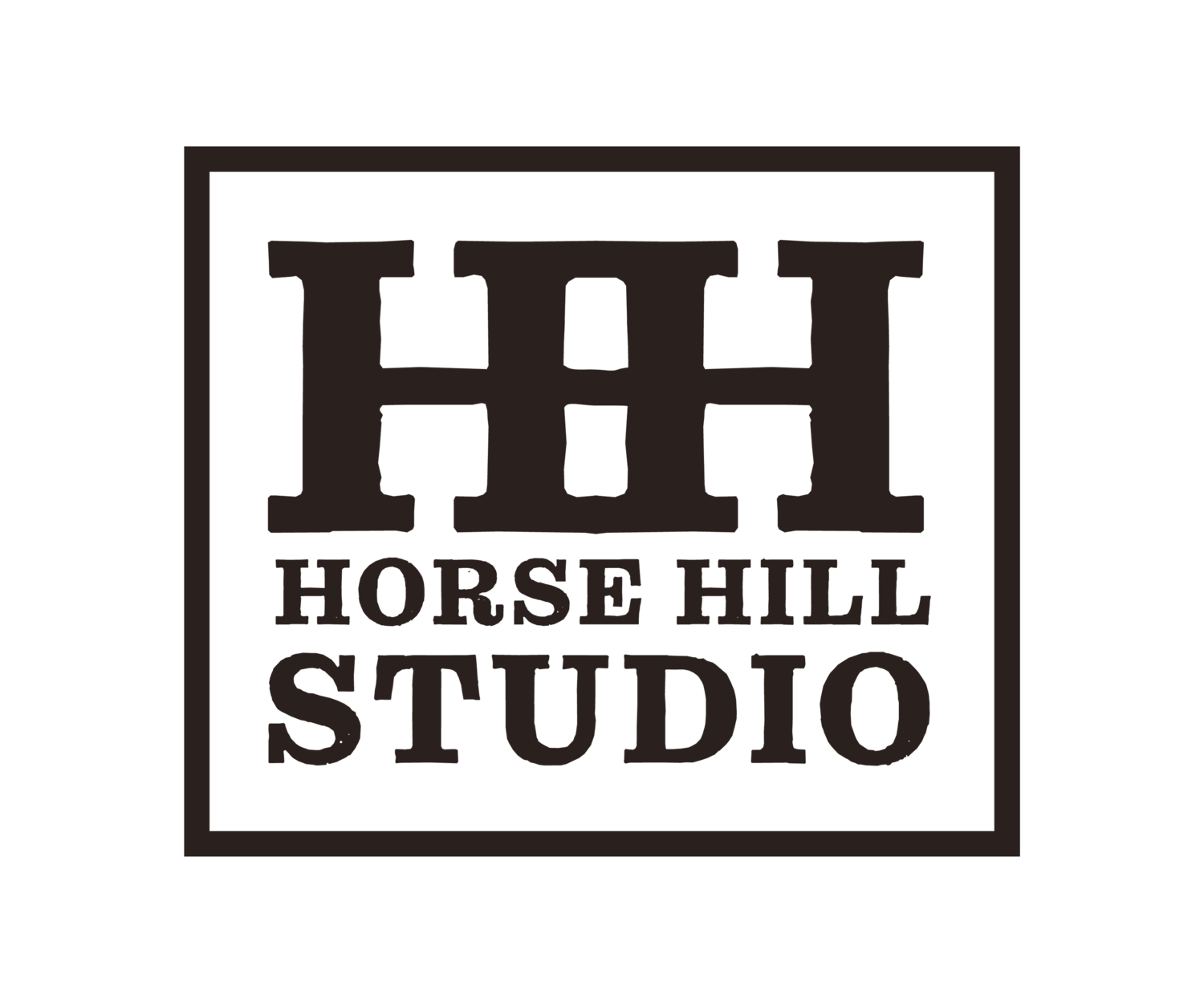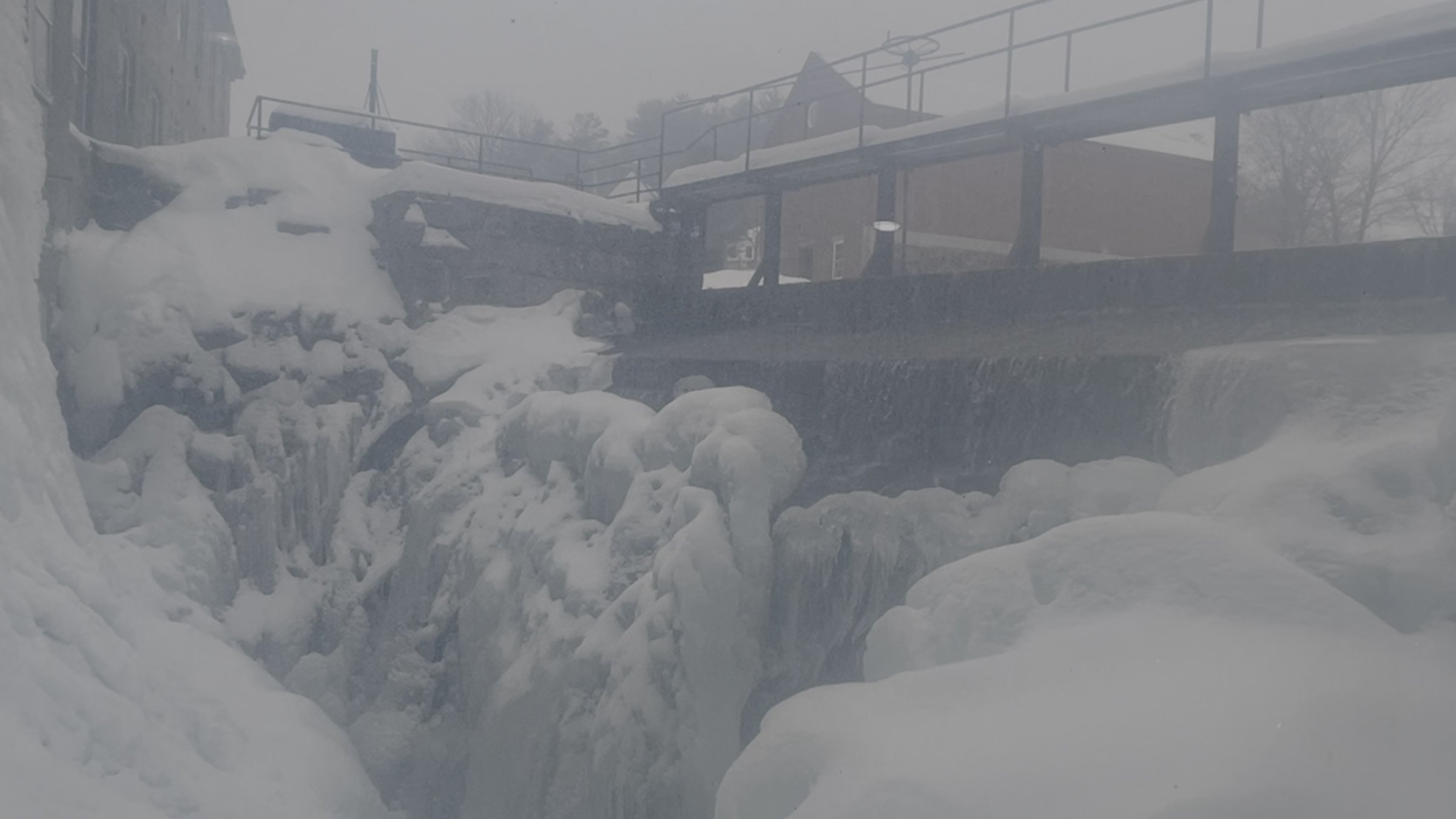
studio
in the
Our awareness of handcrafted works as human identity allows us to see ourselves and others on the most recognizable level.
We embrace ways of knowing perseverance, faith, compassion, and love through the things we build with our hands. These indelible memories of people, cultures, and experiences become our lives. Just as physical sensation or “feeling” stands at the core of human experience, the work we craft with our hands stands as a common bond in our shared humanity.
— Donlin & Jaya
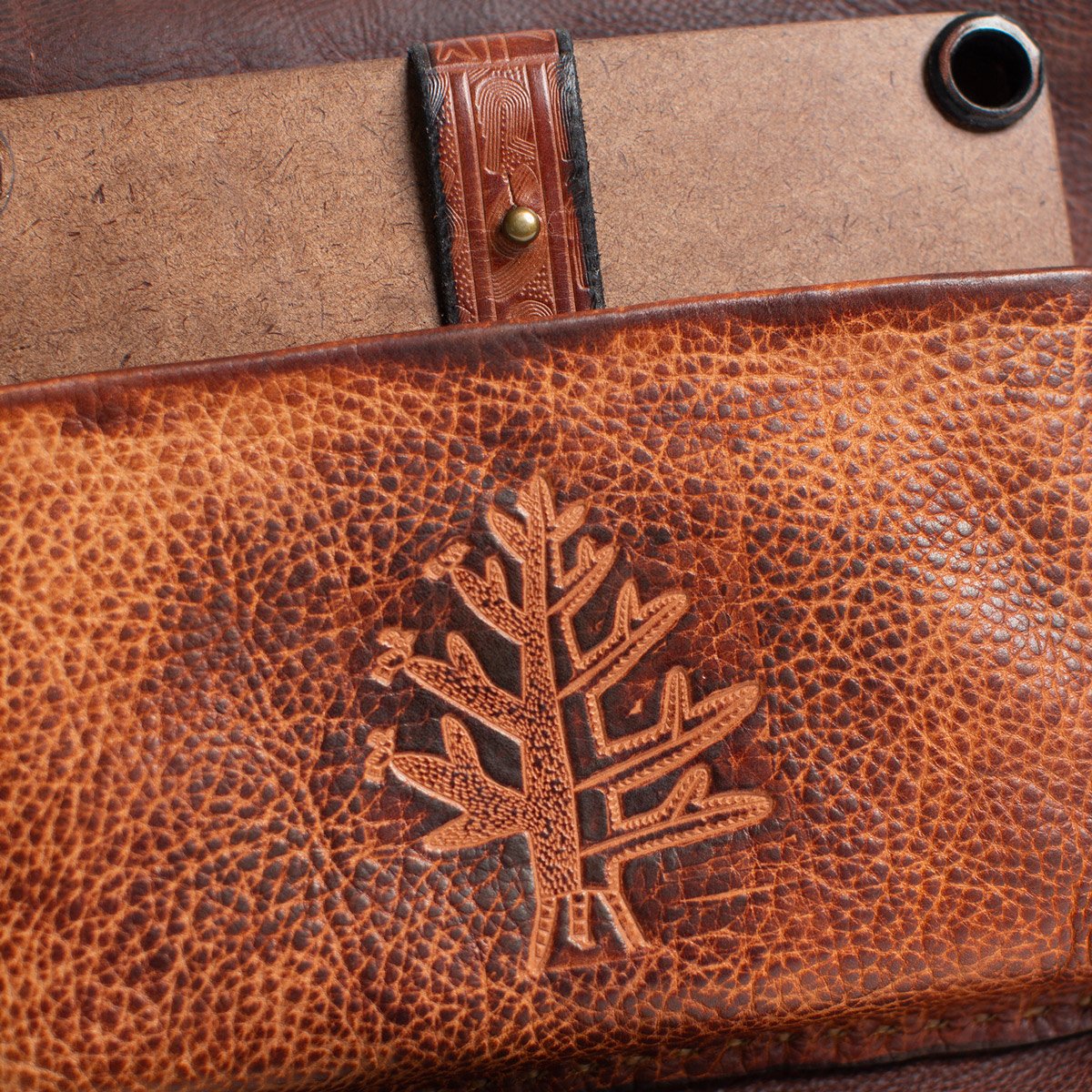
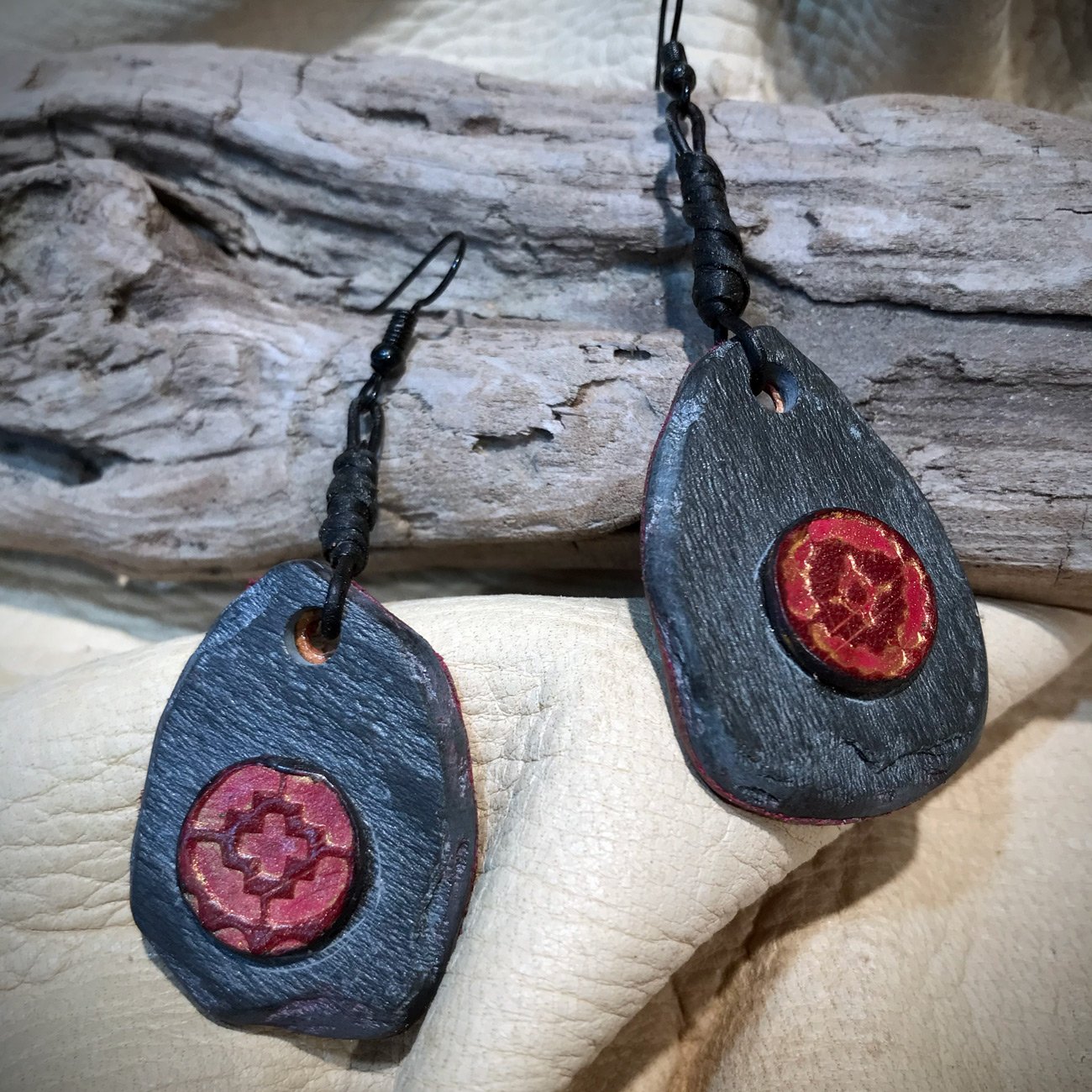

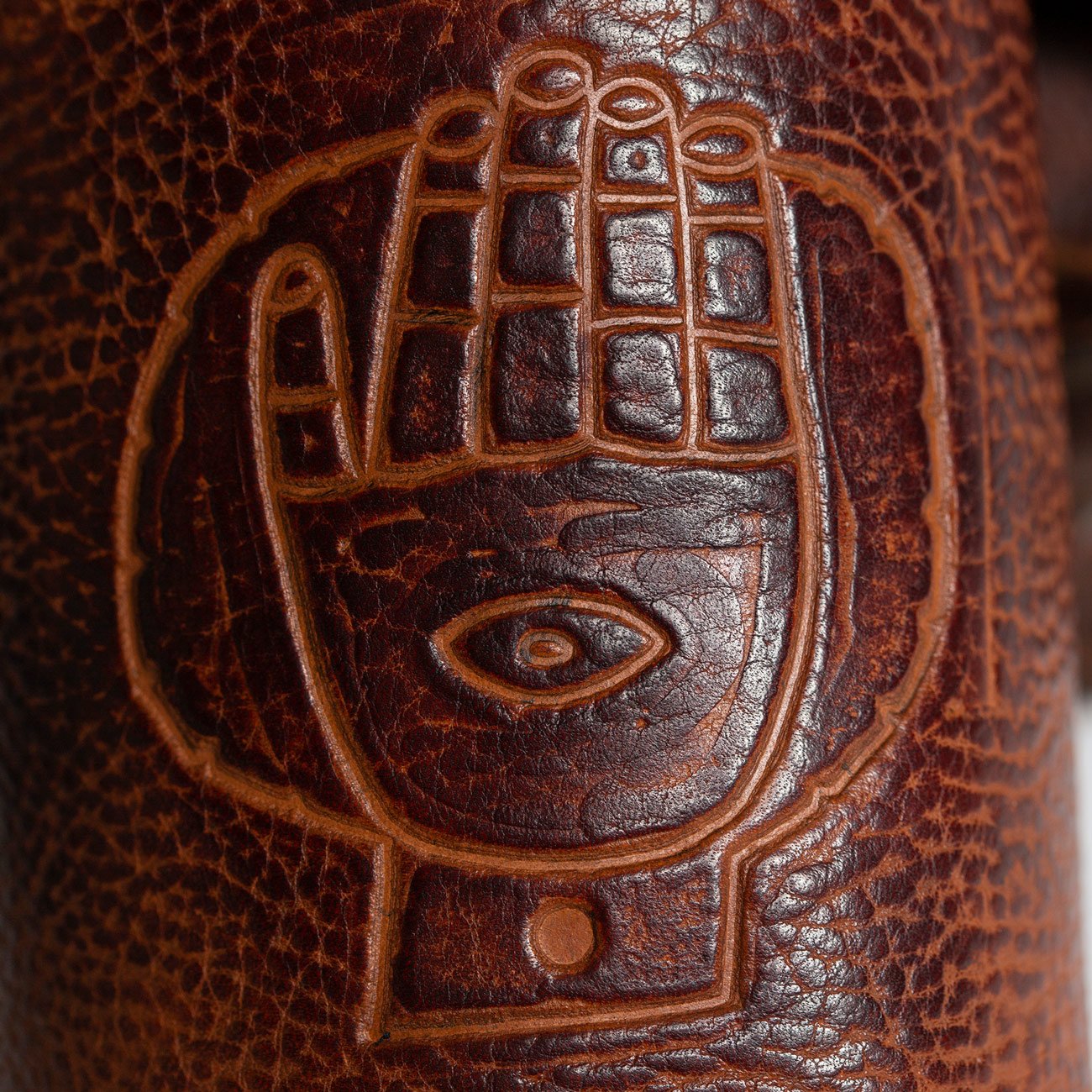
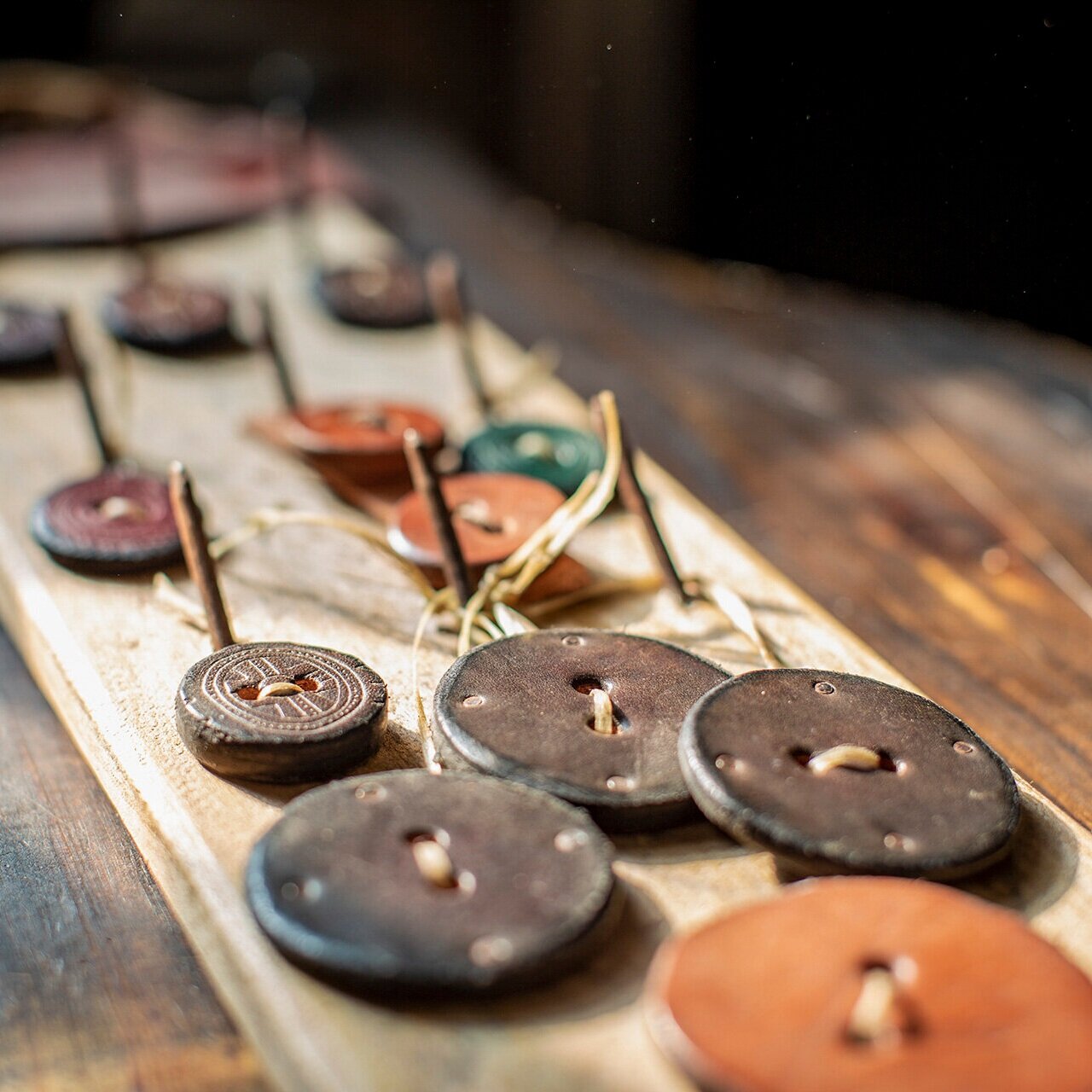
The Process
To be able to envision, to see the object in our mind’s eye, is our best tool. From there, we begin.
We have created dedicated areas in the Studio for each step of the process: drawing and patterning, carving, edging, shaping, and final finishing and dying. The mechanical work i.e. drill press, sander, chop saw. band saw, clicker/embossing tool has its own area as well.
For sewing the Studio uses: the Boss hand stitching machine, a Pfaff walking foot industrial, a vintage treadle industrial, saddle stitching and lacing depending on what the different projects require. And, a look I started and love, and that Jaya has perfected, is using clinching nails for joining two pieces of leather whenever possible.
Embossing is the studio’s most prevalent form of decorative leather work. We start by carving the image into a linoleum block, then press the wet leather into the shape. When it is half dry we can then use modeling tools to bring out and define the image. For more complicated requests we have used a laser cutter and hard wood but now, for very complicated patterns, the negative image plates are created using a 3-D printer. We also do traditional leather tooling.
Vegetable and oil tanned cow hides are the preferred studio leathers. The vegetable tan is never pre-dyed. We do the dyeing and finishing process ourselves which gives the Studio work part of its character. The pieces will generally have a “rustic” look because of our dyeing and burnishing technique. This gives the leather a depth of color and the feel of having been used.
Improvisation forms the underpinning of our work with leather and found objects, but then we have to measure—we have a lot of rulers.
This is a short video showing the pressing, dyeing, and burnishing process.
